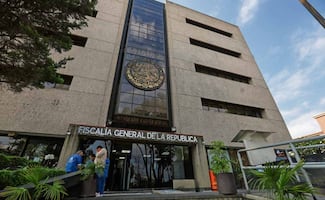Más Información

Posponen en el Senado discusión y votación de reforma para crear la figura de “jueces sin rostro”; se discutirá en febrero

Harfuch descarta que explosión de coche bomba en Michoacán sea un hecho terrorista; "son actos criminales", sostiene

SRE: Buscaremos llegar a un acuerdo con EU por adeudo de agua; vamos a respetar derecho humano al líquido, afirma
Sofía Cancino
was a composer, pianist, singer, and the first woman in Mexico to become an orchestra conductor . It is said that she was also the first Mexican woman to write a symphony , as well as a hundred compositions. Nonetheless, most of her work was never interpreted nor edited.
Cancino was born in Mexico City on July 29, 1897 . During Cancino’s most successful time, things like the following, published in an article from the 1940s, were said of women : “For any woman, regardless of her origin, not having family responsibilities and mainly in her home, to lead businesses, societies, or social movements is something that men can easily understand. We cannot explain the case of some tattle-tale misses – the light of the streets but the darkness at their homes – who do not take care of their husband and children.”
Nevertheless, Cancino was highly admired by her contemporaries . She finished her piano studies at the age of 22 and studied composition in the Music College of the National Autonomous University of Mexico (UNAM). She studied with Jesús M. Acuña, Manuel M. Ponce, and Julián Carrillo , all of them outstanding Mexican musicians from whom she learned orchestra conduction until she herself conducted one.
Music
was the first intellectual and artistic discipline that attracted Mexican women. According to Esperanza Pulido , pianist and researcher, if a criollo woman wanted to have access to education , she had to enter into a convent. It was the 18th century and in the rigorous selection process, applicants were evaluated according to their musical knowledge, becoming the first women to learn music formally.
But it was until the 19th century that Mexico started to stand out for its female musicians . According to hornist Alejandro Duprat Esperón (who worked in the compilation of Sofía Cancino’s work), she “was a pioneer regarding the creation of a musical work within the structure of a symphony . There are no registers of female Mexican composers prior to Cancino that have a symphony, formally speaking.”
In that sense, the first time Cancino was mentioned in the pages of this newspaper was in 1936 , when she attended a session of the 15th Ibero-American Feminine Union where women of several nationalities met to present musical works. That year the edition was dedicated to Brazil and Michoacán.
The participants presented hymns, studies of musical works, jarabes , and even a Michoacán medley . For her part, Cancino presented “Michoacán, ” in which she encompassed sounds “from primitive times, passing through all its civilizations until the Conquest,” as mentions an article from October 15, 1936.
That same year she gave her first concerts and in 1941 she conducted “Don Giovanni,” by Wolfgang Amadeus Mozart. A reporter wrote that Cancino defeated “all kinds of difficulties and faced all the expenses without expecting to receive a material favor,” for the presentation was open to all public in Mexico City’s Arbeu Theater.
According to a review of those times, Cancino set up the play with a group of Mexican artists , with only eight voices , a piano, no sponsorship and facing union problems. In spite of that, the public’s interest was so big that the theater was overcrowded.
Later on, Sofía Cancino founded an opera school , according to the publication “Women in Mexico’s Arts and Culture,” of the Women’s National Institute . Some sources recognize her as the creator of at least a hundred works and sd the first female conductor of the Mexican Symphonic Orchestra .
Regarding the latter, Duprat Esperón clarifies “that, as far as I know, did not happen. She organized private opera performances at the Palace of Fine Arts, hiring her orchestra and cast, and she conducted.”
Duprat Esperón points out that Cancino’s work was rarely interpreted, “mainly because she had an important taste for opera and used much of her time in organizing and producing private opera performances and not so much in promoting her work . A string quartet of the master was recorded and some songs or lieds for piano and voice were edited.”
From the huge work of Cancino stand out the concert for piano and orchestra , premiered in 1937; the Symphony in G major , pieces for piano, cello, violin, singing, chamber music , as well as four operas : Gil González de Ávila (1937), Annette (1945), Michoacana (1950), Promesa d’Artista e Parola di re (1952) , in addition to a symphony and the symphonic poem Rooster in Pátzcuaro (Gallo en Pátzcuaro).
In 1953, critic Armando María y Campos wrote that Sofía Cancino brought to Mexico pieces that had not been played in almost a century and that, in addition, she took advantage of the radio to disseminate opera to the Mexican public, telling its story and musical theory.
In her times, it was said that “no real opera fan ignored who Mrs. Sofía is in Mexico.” She kept setting up works of famous composers although her own has yet to see the light of day. Sofía Cancino passed away on December 16, 1982 , perhaps taking with her more compositions that remain unknown until our days.
mp
Noticias según tus intereses
[Publicidad]
[Publicidad]
















